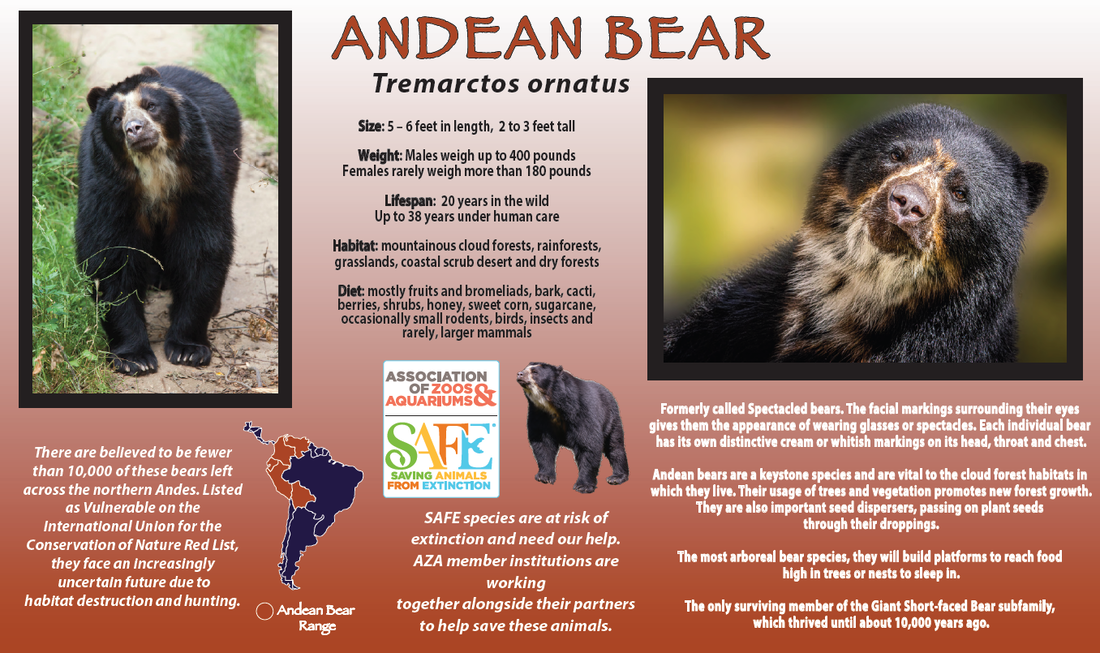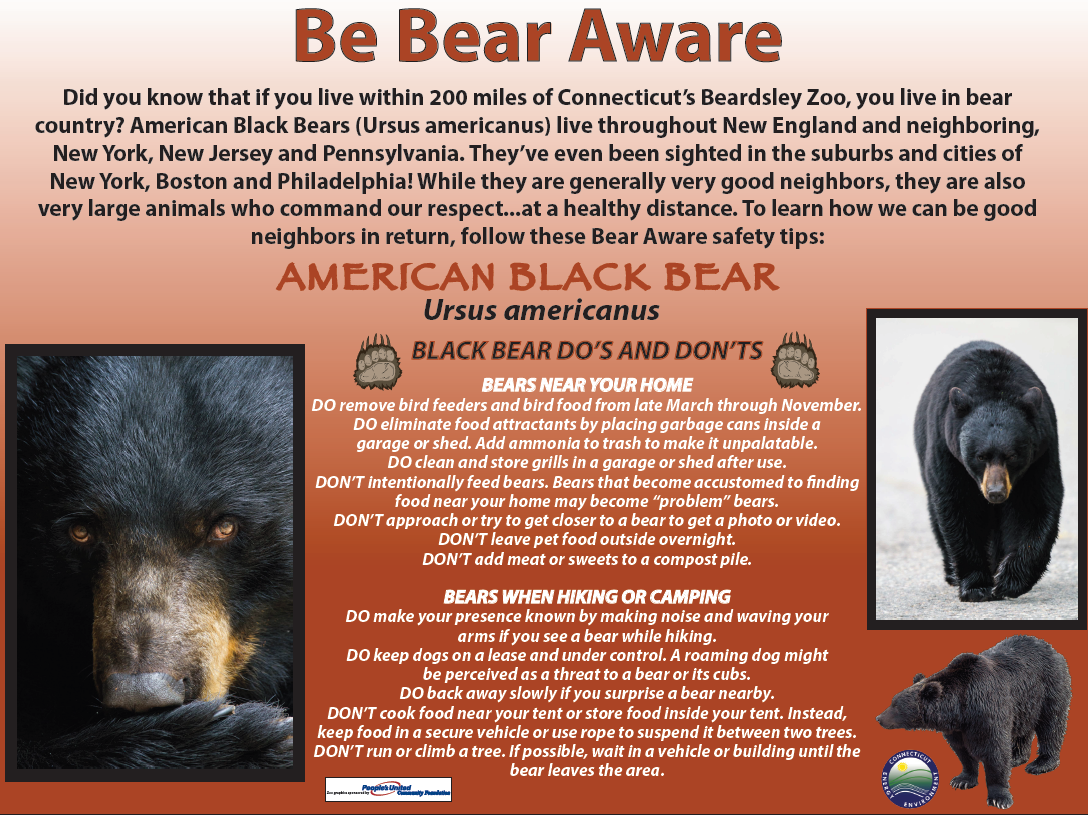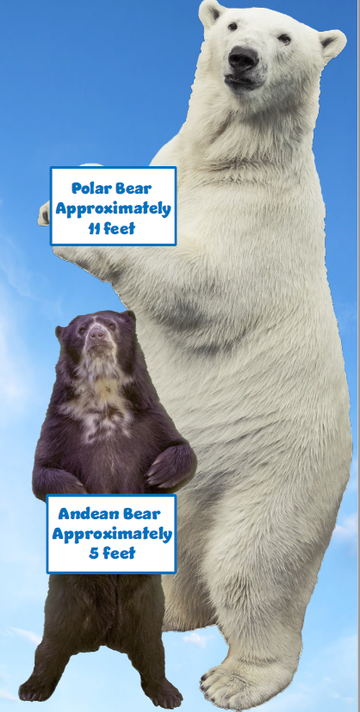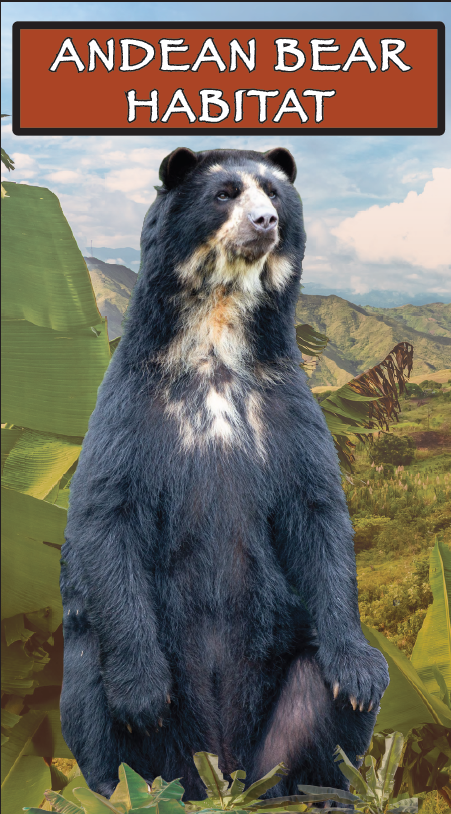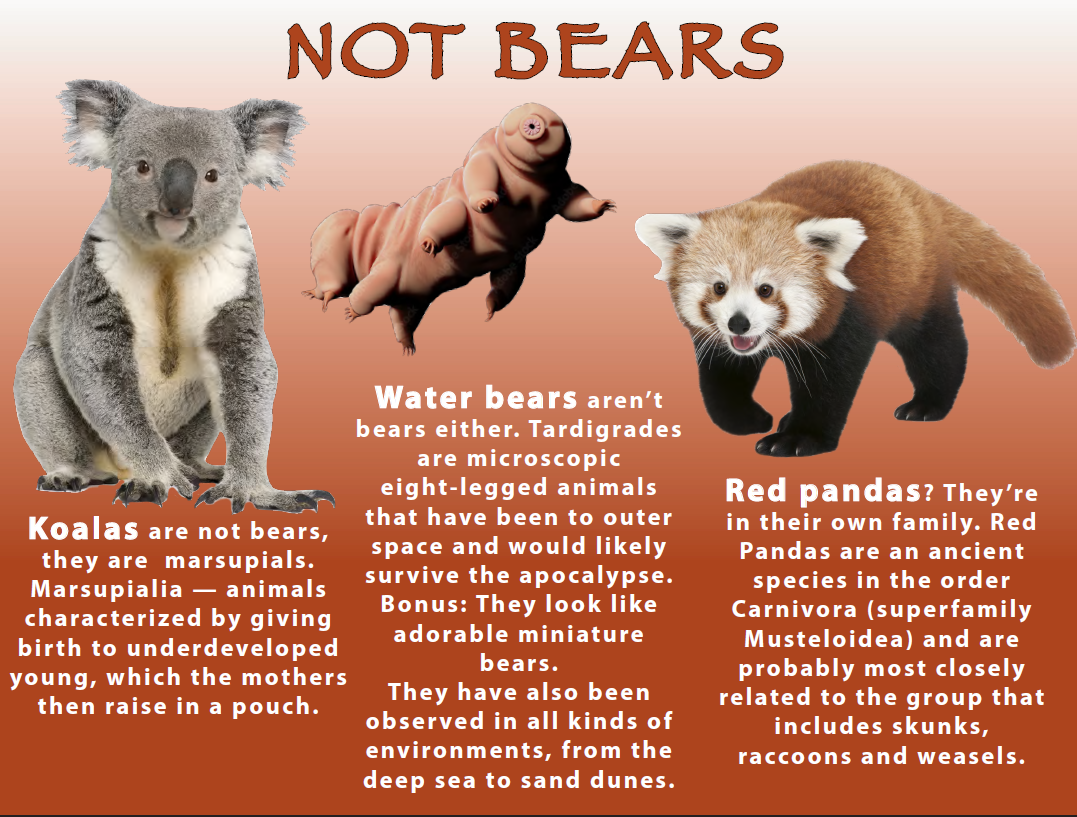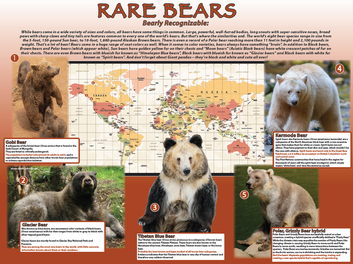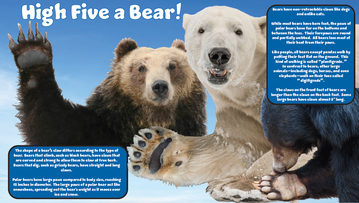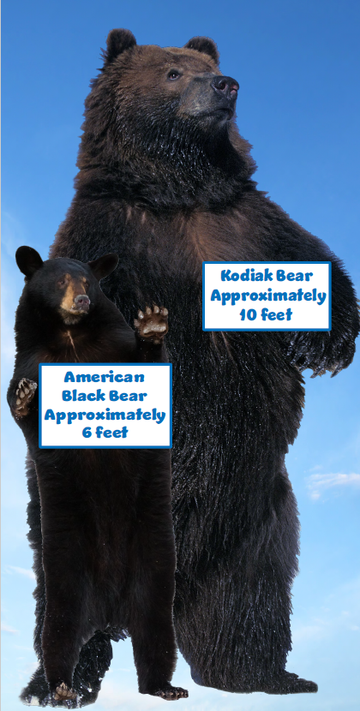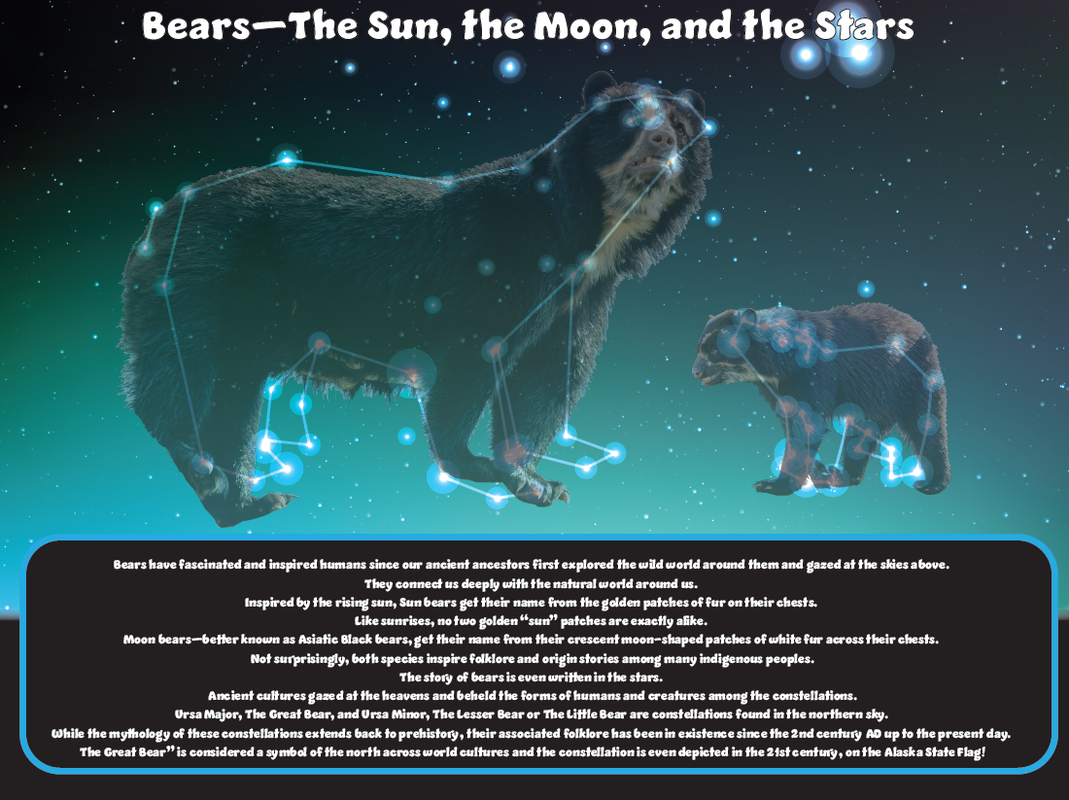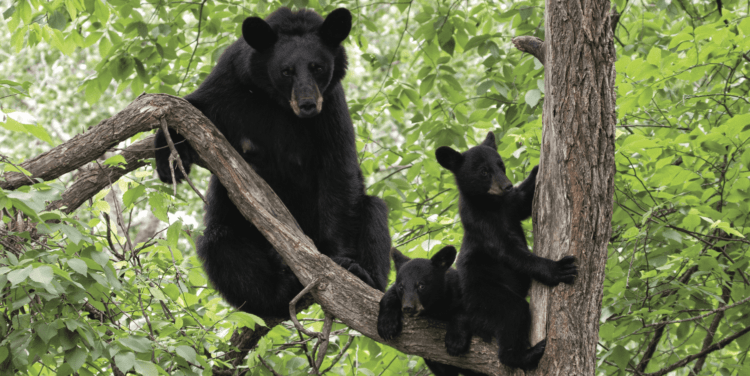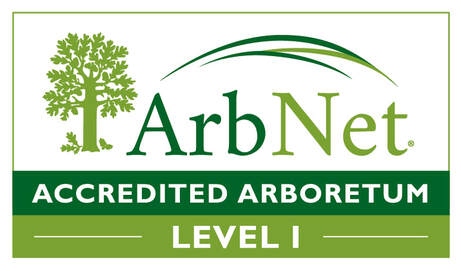To celebrate the opening of our new bear habitat and our new Andean Bear, we are celebrating all things BEAR this summer at Connecticut's BEAR-dsley Zoo!
Upcoming Bear Events
May 10, Be Bear Aware Panel, 7:00-8:30 pm., Carousel Building
The Zoo has assembled a cadre of bear experts to answer all your questions on living safely with black bears, and more! This very informative evening will address concerns about wild bears, share information on what bears are really like, what they need, and discuss how we can help to promote bear conservation and habitat protection. Plus, learn about our new Andean bear habitat opening in just 10 days! CLICK HERE TO REGISTER
May 17, Evening Lecture Series: The Bear Reality, Felicia Ortner, CT Master Wildlife Conservationist 7 p.m.
Bears have become victims of misunderstandings, fueled by media, literature, and word of mouth. The population of black bears has increased in Connecticut over the last four decades and will continue to grow. This program will share information on the American black bear, the state’s only resident species in the wild, to improve our understanding and tolerance and reduce conflicts with our wild bear neighbors. The lecture will be presented via Zoom and in person. The cost is $10 for each lecture, with light refreshments provided. Sponsored by the Zoo’s Volunteer Council. Volunteers are free. CLICK HERE TO REGISTER
May 20, Grand Opening Andean Bear Habitat, 11:00 a.m.
Help us celebrate the Grand Opening of our newest habitat for Andean bears! We’ll bring the snacks and giveaway along with special presentations on these beautiful and endangered South American bears, returning to the Zoo after an absence of several years. This large and beautiful habitat for the arboreal (tree-climbing) bears features a very special guest viewing area. Zoo Educators will be on hand from 11 a.m. to 3 p.m. with exciting information about these “spectacled” bears. The first 100 guests to arrive will receive an Andean bear water bottle!
July 15, Teddy Bear Clinic
Children are invited to bring their favorite teddy bear, or any special pal, to Connecticut’s Beardsley Zoo on Saturday, July 15 from 10 a.m. to 3:00 p.m. This “beary” fun day will feature children’s activities and storytelling focusing on bear awareness. Plus, bring your teddy bear to the “Teddy Bear Clinic” and get a free health checkup for your friend. The Teddy Bear Clinic will include story time and the opportunity to ask all your bear questions to our bear experts. Teddy Bear Clinic is free with paid admission to the Zoo.
The Zoo has assembled a cadre of bear experts to answer all your questions on living safely with black bears, and more! This very informative evening will address concerns about wild bears, share information on what bears are really like, what they need, and discuss how we can help to promote bear conservation and habitat protection. Plus, learn about our new Andean bear habitat opening in just 10 days! CLICK HERE TO REGISTER
May 17, Evening Lecture Series: The Bear Reality, Felicia Ortner, CT Master Wildlife Conservationist 7 p.m.
Bears have become victims of misunderstandings, fueled by media, literature, and word of mouth. The population of black bears has increased in Connecticut over the last four decades and will continue to grow. This program will share information on the American black bear, the state’s only resident species in the wild, to improve our understanding and tolerance and reduce conflicts with our wild bear neighbors. The lecture will be presented via Zoom and in person. The cost is $10 for each lecture, with light refreshments provided. Sponsored by the Zoo’s Volunteer Council. Volunteers are free. CLICK HERE TO REGISTER
May 20, Grand Opening Andean Bear Habitat, 11:00 a.m.
Help us celebrate the Grand Opening of our newest habitat for Andean bears! We’ll bring the snacks and giveaway along with special presentations on these beautiful and endangered South American bears, returning to the Zoo after an absence of several years. This large and beautiful habitat for the arboreal (tree-climbing) bears features a very special guest viewing area. Zoo Educators will be on hand from 11 a.m. to 3 p.m. with exciting information about these “spectacled” bears. The first 100 guests to arrive will receive an Andean bear water bottle!
July 15, Teddy Bear Clinic
Children are invited to bring their favorite teddy bear, or any special pal, to Connecticut’s Beardsley Zoo on Saturday, July 15 from 10 a.m. to 3:00 p.m. This “beary” fun day will feature children’s activities and storytelling focusing on bear awareness. Plus, bring your teddy bear to the “Teddy Bear Clinic” and get a free health checkup for your friend. The Teddy Bear Clinic will include story time and the opportunity to ask all your bear questions to our bear experts. Teddy Bear Clinic is free with paid admission to the Zoo.
In the Community
|
Connecticut’s Beardsley Zoo Hosts Third “Wild About Reading” Contest at Area Libraries
The Zoo has teamed up with 25 area libraries to help put the ‘bear” in Bear-dsley Zoo, while supporting literacy and reading. To celebrate the opening of the Zoo’s new Andean bear habitat and a summer of Be Bear Aware, the Zoo is sponsoring 500 prizes hidden in books at participating libraries. Children are invited to paw through books on bears to find prizes on Saturday, June 17. On Saturday, June 17, children and their families are invited to the libraries to search through books on bears, both fiction and non-fiction, in the children’s book departments. The Monroe library will hold their event on Friday, June 16. Libraries participating in the search are in the following towns: Beacon Falls, all six branches in Ansonia, Bridgeport, Cheshire, Danbury, Derby, Easton, two branches in Fairfield, Hamden, Milford, Monroe, New Canaan, Newtown, Seymour, branch 41 in Shelton, Stratford, and Trumbull. |
Andean Bear Pictures
|
|
BEAR BLOG
|
Wildly Successful: The American Black Bear
By Greenwich Sentinel Columns, Jim Knox Every April we begin to hear them—the accounts from our fellow Fairfield County residents. Whether overheard in line at the post office, grocery shopping, or speaking with a neighbor, invariably our paths cross with someone who has had a sighting. |
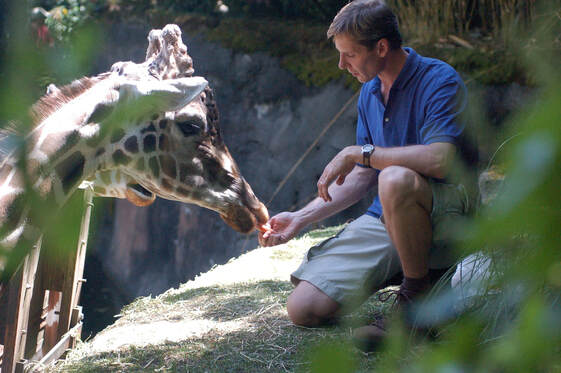
01/04/2020
Wildly Successful: The American Black Bear
Written By: Jim Knox
As we reflect on all of that calorie-rich holiday food, and shiver at the mere thought of the mercury plunging outside our windows, we feel the beckoning of the couch and a long-awaited winter’s nap. If this notion appeals to you—I’m right there with you, and…we’re not alone. In fact, someone who likely shares our view, is a fellow Connecticut resident and periodic Greenwich guest star, the American Black Bear.
The American Black Bear, Ursus americanus, is Connecticut’s only bear and the sole representative of the bear family in the Eastern United States. Reaching lengths of 6.5 feet and weights of up to 650 pounds (with some huge males far exceeding this range), the Black Bear is no lightweight. Though classified as a carnivore, these bears are highly opportunistic omnivores and accordingly thrive throughout The Nutmeg State. Stoking up on calories, shunning winter’s frigid grasp and snoozing through the lean months is more than a pleasant notion, it’s a proven survival strategy which has served bears well for 30 million years.
While many of our resident species such as Red-tailed Hawks and Ruby-throated Hummingbirds migrate great distances to access plentiful food resources over the sparse New England winter months, Black Bears—lacking the ability to “take wing”, have adopted a highly-efficient survival strategy of their own. These bruins undergo a cold weather rest phase we colloquially call hibernation. Specifically, the bears enter a particular form of hibernation known as torpor. This enables them to vastly slow their metabolism to conserve precious energy released from accumulated energy-storing fat. With respiration rates as low as one breath per minute and heart rates as low as three beats per minute, we’re talking slow here.
Yet this remarkable physiological phenomenon is only possible through several key adaptations. At the conclusion of their all-consuming (I mean that literally), calorie-stoking foraging known as hyperphagia, Black Bears defecate and then groom their fur, consuming the fur along with indigestible plant roughage from their bedding such as leaves, bark and grasses. This roughage forms what is known as a fecal plug (nature’s road to efficiency often takes a detour through “gross”). This plug prevents the bear from fouling itself within its den during its long winter slumber. In practice, if the bears can forage well enough to build sufficient fat layers, and can find a denning location which affords them seclusion and some degree of shelter, they can enter the astoundingly deep sleep of torpor for months to come—without the need to eat, drink or pass waste. When the weather warms sufficiently and food abounds, the bears awake and immediately resume foraging to once again sustain their huge bodies.
This amazing metabolic survival strategy is all predicated on one premise, gathering enough food to fuel to the process. Mother Nature has equipped bears with the overriding instinctual drive to forage, or search for food items utilizing their senses—especially their legendary sense of smell. I tend to think of bears as stomachs, equipped with teeth and claws, steered by a nose. A Black Bear’s sense of smell is so keen it can detect the nutritious honey and bee brood of a beehive from more than a mile away, and apples ripening in an orchard up to five miles away! I’m proud when I can detect my wife’s Toll House cookies baking from two rooms away.
Due to the protection and regrowth of our Connecticut forests and the maturation of their nut production, known as mast, wildlife populations in The Nutmeg State have rebounded. When Gray squirrel and Wild turkey populations expand, our state’s top land predator reaps the rewards. Further bolstered by improved land use and conservation practices statewide, the bears have responded. As a child, I desperately hoped to see a bear during meadow hikes at Greenwich Audubon or beneath the Hemlocks of Mianus River Gorge. Extirpated, or extinct throughout their former range in Connecticut for decades, the Black Bear population has grown from a handful of bears in the 1980’s to a conservative 800 bruins in 2020. As a key species which provides essential ecological balance, this is good news. Yet this good news comes with the challenge and the responsibility of coexisting peacefully with these magnificent creatures. Bear awareness keeps both humans and bears safe, and it takes many forms. From feeding your pets inside, to restricting bird feeding to bear hibernation months, to knowing how to react when encountering a Black Bear in the wild, or in your yard, bear awareness is essential. For more information on bear awareness in Connecticut, access the Connecticut Department of Energy and Environmental Protection’s website: www.ct.gov/deep .
Nature constantly offers us lessons. They’re invaluable, they’re free and they don’t expire. In the American Black Bear, we have a creature which accesses resources as they become available, conserves energy in times of scarcity and adapts its behavioral patterns to be in concert with the world around it. At its essence, this is a strategy which has served a fellow species quite well for 30 million years. I believe it’s worthy of a closer look, and perhaps, a little emulation.
Jim Knox is The Curator of Education for Connecticut's Beardsley Zoo. From South American Andean Bears, to North American Black Bears and Grizzly Bears, he has worked with these magnificent creatures from which we can learn so much.
Wildly Successful: The American Black Bear
Written By: Jim Knox
As we reflect on all of that calorie-rich holiday food, and shiver at the mere thought of the mercury plunging outside our windows, we feel the beckoning of the couch and a long-awaited winter’s nap. If this notion appeals to you—I’m right there with you, and…we’re not alone. In fact, someone who likely shares our view, is a fellow Connecticut resident and periodic Greenwich guest star, the American Black Bear.
The American Black Bear, Ursus americanus, is Connecticut’s only bear and the sole representative of the bear family in the Eastern United States. Reaching lengths of 6.5 feet and weights of up to 650 pounds (with some huge males far exceeding this range), the Black Bear is no lightweight. Though classified as a carnivore, these bears are highly opportunistic omnivores and accordingly thrive throughout The Nutmeg State. Stoking up on calories, shunning winter’s frigid grasp and snoozing through the lean months is more than a pleasant notion, it’s a proven survival strategy which has served bears well for 30 million years.
While many of our resident species such as Red-tailed Hawks and Ruby-throated Hummingbirds migrate great distances to access plentiful food resources over the sparse New England winter months, Black Bears—lacking the ability to “take wing”, have adopted a highly-efficient survival strategy of their own. These bruins undergo a cold weather rest phase we colloquially call hibernation. Specifically, the bears enter a particular form of hibernation known as torpor. This enables them to vastly slow their metabolism to conserve precious energy released from accumulated energy-storing fat. With respiration rates as low as one breath per minute and heart rates as low as three beats per minute, we’re talking slow here.
Yet this remarkable physiological phenomenon is only possible through several key adaptations. At the conclusion of their all-consuming (I mean that literally), calorie-stoking foraging known as hyperphagia, Black Bears defecate and then groom their fur, consuming the fur along with indigestible plant roughage from their bedding such as leaves, bark and grasses. This roughage forms what is known as a fecal plug (nature’s road to efficiency often takes a detour through “gross”). This plug prevents the bear from fouling itself within its den during its long winter slumber. In practice, if the bears can forage well enough to build sufficient fat layers, and can find a denning location which affords them seclusion and some degree of shelter, they can enter the astoundingly deep sleep of torpor for months to come—without the need to eat, drink or pass waste. When the weather warms sufficiently and food abounds, the bears awake and immediately resume foraging to once again sustain their huge bodies.
This amazing metabolic survival strategy is all predicated on one premise, gathering enough food to fuel to the process. Mother Nature has equipped bears with the overriding instinctual drive to forage, or search for food items utilizing their senses—especially their legendary sense of smell. I tend to think of bears as stomachs, equipped with teeth and claws, steered by a nose. A Black Bear’s sense of smell is so keen it can detect the nutritious honey and bee brood of a beehive from more than a mile away, and apples ripening in an orchard up to five miles away! I’m proud when I can detect my wife’s Toll House cookies baking from two rooms away.
Due to the protection and regrowth of our Connecticut forests and the maturation of their nut production, known as mast, wildlife populations in The Nutmeg State have rebounded. When Gray squirrel and Wild turkey populations expand, our state’s top land predator reaps the rewards. Further bolstered by improved land use and conservation practices statewide, the bears have responded. As a child, I desperately hoped to see a bear during meadow hikes at Greenwich Audubon or beneath the Hemlocks of Mianus River Gorge. Extirpated, or extinct throughout their former range in Connecticut for decades, the Black Bear population has grown from a handful of bears in the 1980’s to a conservative 800 bruins in 2020. As a key species which provides essential ecological balance, this is good news. Yet this good news comes with the challenge and the responsibility of coexisting peacefully with these magnificent creatures. Bear awareness keeps both humans and bears safe, and it takes many forms. From feeding your pets inside, to restricting bird feeding to bear hibernation months, to knowing how to react when encountering a Black Bear in the wild, or in your yard, bear awareness is essential. For more information on bear awareness in Connecticut, access the Connecticut Department of Energy and Environmental Protection’s website: www.ct.gov/deep .
Nature constantly offers us lessons. They’re invaluable, they’re free and they don’t expire. In the American Black Bear, we have a creature which accesses resources as they become available, conserves energy in times of scarcity and adapts its behavioral patterns to be in concert with the world around it. At its essence, this is a strategy which has served a fellow species quite well for 30 million years. I believe it’s worthy of a closer look, and perhaps, a little emulation.
Jim Knox is The Curator of Education for Connecticut's Beardsley Zoo. From South American Andean Bears, to North American Black Bears and Grizzly Bears, he has worked with these magnificent creatures from which we can learn so much.


